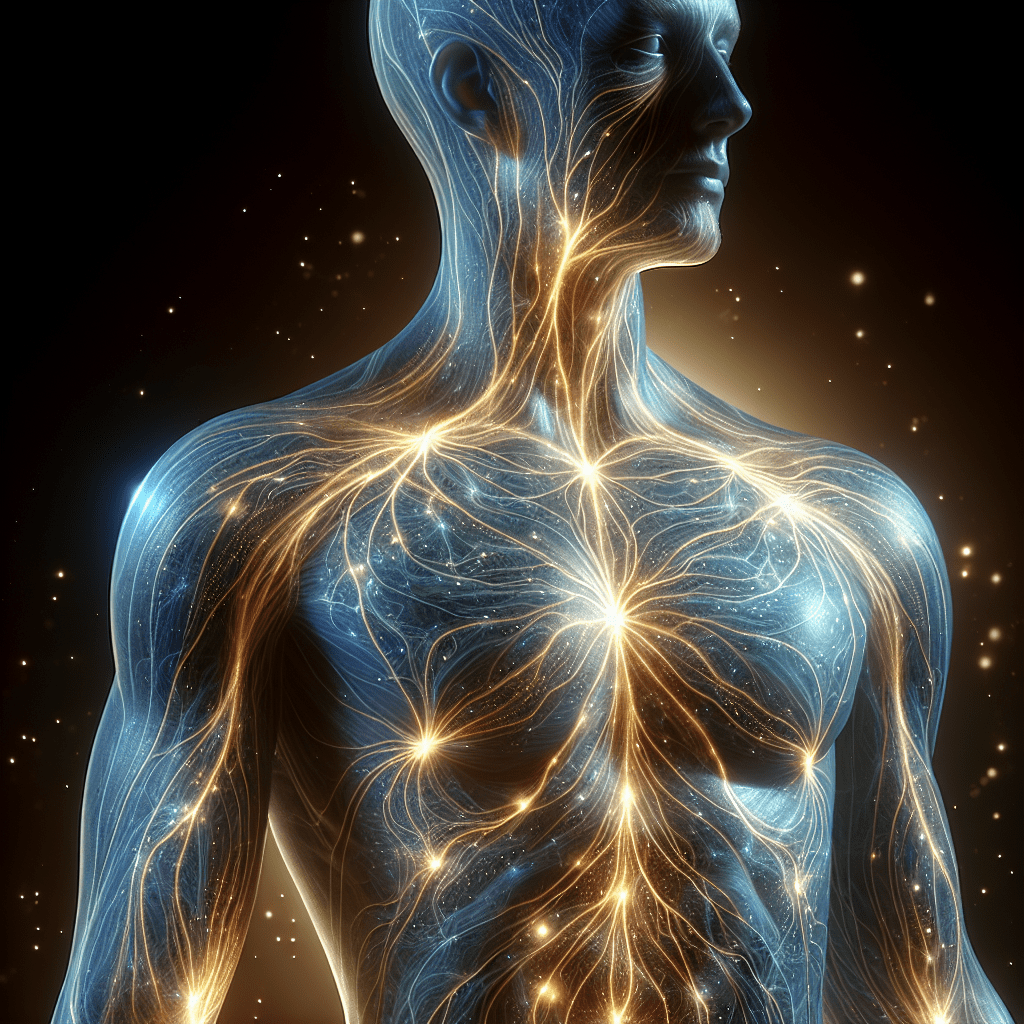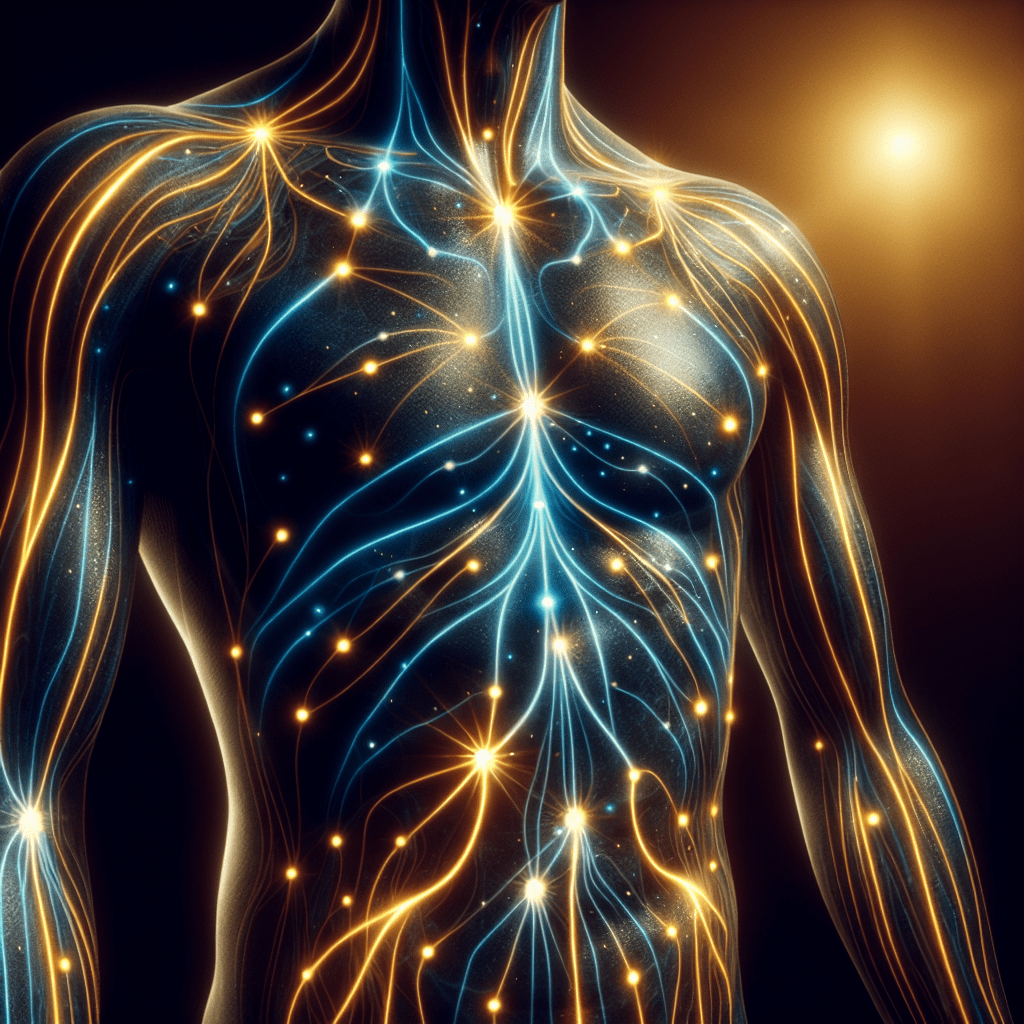Have you ever woken up feeling “off” even though you got plenty of sleep? Or experienced unexplained fatigue in the afternoon that no amount of coffee seems to fix? Maybe you’ve had days where emotions like irritability or sadness seem to appear out of nowhere. If these scenarios sound familiar, ancient Eastern wisdom might offer an explanation that modern medicine often overlooks: your body’s meridian system could be out of balance.
Imagine having access to a detailed map of your body’s energy highways—a map that could explain why you feel anxious at certain times of day, why you get headaches after eating particular foods, or why your digestion slows down during specific seasons. This map exists and has guided healers for thousands of years. It’s called a body meridian chart, and understanding it might be the missing piece in your wellness puzzle.
The Energy Highways Within: Understanding Meridians and Qi
In traditional Eastern medicine, particularly Chinese medicine, the body is viewed not just as a collection of organs and tissues, but as an intricate network of energy pathways called meridians. These meridians serve as channels for Qi (pronounced “chee”), the vital life force that flows through our bodies, animating and sustaining us.
Think of meridians as your body’s superhighways, transporting this essential energy to every cell, tissue, and organ. Just as a traffic jam on a major freeway affects the entire transportation system of a city, blockages in your meridian pathways can disrupt your overall health and well-being.
“Qi is fundamental in traditional Chinese medicine, sustaining all life,” explains Dr. Lin Chen, a TCM practitioner with over 30 years of experience. “When Qi flows freely through the meridians, we experience health and vitality. When it’s blocked or imbalanced, we feel it both physically and emotionally.”
These energy channels don’t exist in isolation—they form an interconnected network that links different parts of your body in ways that might seem surprising from a Western perspective. For example, the Liver meridian connects to your eyes, meaning that imbalances in this pathway might manifest as vision issues or eye irritation. Similarly, the Heart meridian influences your tongue and speech, which is why Eastern practitioners often examine the tongue as part of a diagnostic process.
The Twelve Primary Meridians: Your Body’s Energy Map
The body meridian chart identifies twelve primary meridians, each named after an organ or function they govern. These meridians are categorized into yin and yang groups, reflecting the fundamental Eastern understanding that health emerges from balance between opposing yet complementary forces.
The six yin meridians include:
- Lung meridian (LU)
- Spleen meridian (SP)
- Heart meridian (HT)
- Kidney meridian (KI)
- Pericardium meridian (PC)
- Liver meridian (LV)
While the six yang meridians are:
- Large Intestine meridian (LI)
- Stomach meridian (ST)
- Small Intestine meridian (SI)
- Bladder meridian (BL)
- Triple Warmer or San Jiao meridian (TW)
- Gallbladder meridian (GB)
Each of these meridians flows through specific pathways in the body. For instance, the Lung meridian runs from the chest to the thumb, with 11 pressure points along its path. The Bladder meridian, one of the longest, runs from the inner eye, over the head, down the back, and all the way to the little toe.
What makes this system particularly fascinating is that these meridians don’t operate independently—they form a continuous circuit, with energy flowing from one to the next in a precise sequence throughout the day, completing a full cycle every 24 hours. This is the foundation of the Chinese Body Clock, which suggests that each two-hour period is governed by a specific meridian’s peak energy.
When Energy Gets Stuck: Recognizing Meridian Imbalances
If you’ve ever felt inexplicably tired at 3 PM despite getting adequate sleep, or found yourself waking up at exactly the same time each night, your body might be trying to tell you something about your meridian health. According to the body meridian chart, these patterns aren’t random but often indicate specific imbalances in your energy system.
Blockages or deficiencies in meridian flow can manifest in numerous ways:
- Chronic pain in specific areas of the body
- Recurring digestive issues
- Emotional instability or mood swings
- Sleep disturbances that follow patterns
- Seasonal health challenges
- Fatigue that isn’t relieved by rest
Lisa Thompson, a yoga therapist who incorporates meridian theory into her practice, shares: “I had a client who experienced persistent shoulder pain that conventional treatments couldn’t resolve. When we addressed her Gallbladder meridian through targeted yoga poses and acupressure, the pain diminished significantly within weeks. The body meridian chart gave us a roadmap for healing that Western approaches had missed.”
The good news is that once you understand how to read the signals your body is sending, you can take steps to restore balance. Acupuncture and acupressure are perhaps the most well-known methods for clearing meridian blockages, but they’re not the only options. Simple self-care practices like meridian stretching, specific breathing techniques, and even mindful eating can help maintain healthy energy flow.
Reading Your Body’s Energy Map: The Visual Guide
Body meridian charts serve as visual representations of these energy pathways, mapping out the exact routes Qi takes through your body. These charts typically show the human body from different angles with colored lines indicating each meridian’s path and dots marking important acupuncture or acupressure points.
For practitioners of Eastern medicine, these charts are as essential as anatomical diagrams are to Western doctors. They guide the placement of acupuncture needles, inform massage techniques, and help diagnose imbalances based on symptoms and their location in the body.
Modern body meridian charts often incorporate both Eastern and Western terminology, making them more accessible to contemporary users. Some even include digital versions with interactive features that allow users to click on specific points to learn about their functions and therapeutic applications.
What makes these charts particularly valuable is their ability to help us understand the body as an integrated whole rather than a collection of separate systems. When you look at a body meridian chart, you can visually trace how an issue in one area might be connected to seemingly unrelated symptoms elsewhere in the body.
The Dance of Opposites: Yin and Yang in Meridian Balance
Central to understanding meridian theory is the concept of yin and yang—the complementary forces that must remain in harmony for health to flourish. In the context of meridians, yin and yang qualities help categorize the energy channels and explain how they function.
Yin meridians generally:
- Run along the inner surfaces of the limbs
- Are associated with solid organs (Liver, Heart, Spleen, Lungs, Kidneys)
- Have energy that flows upward
- Are more protective and nurturing in nature
Yang meridians typically:
- Run along the outer surfaces of the limbs
- Are associated with hollow organs (Gallbladder, Small Intestine, Stomach, Large Intestine, Bladder)
- Have energy that flows downward
- Are more active and expressive in nature
“Yin and yang represent the dynamic interplay of relative opposites,” explains Dr. Margaret Wong, a practitioner who integrates Eastern and Western approaches. “Think of it as the rhythm between rest and activity, cooling and warming, contracting and expanding. When these forces are balanced in our meridians, we experience health and happiness. When imbalanced, we feel difficulty and ill-health.”
This balance isn’t static but constantly shifting in response to our activities, environment, diet, emotions, and even the time of day or season. The body meridian chart helps us visualize these relationships and understand how to support appropriate balance for our individual needs.
The Five Elements: Deepening Your Meridian Understanding
Building on the foundation of yin and yang, Chinese medicine further organizes meridians according to the Five Elements theory: Wood, Fire, Earth, Metal, and Water. Each element corresponds to specific meridians, organs, emotions, seasons, and more, creating a comprehensive framework for understanding health and imbalance.
For example:
- Wood element relates to the Liver and Gallbladder meridians, spring season, and emotions of anger or decisiveness
- Fire element connects to the Heart, Small Intestine, Pericardium, and Triple Warmer meridians, summer, and joy or anxiety
- Earth element links the Spleen and Stomach meridians, late summer, and emotions like worry or empathy
- Metal element corresponds to the Lung and Large Intestine meridians, autumn, and grief or inspiration
- Water element associates with the Kidney and Bladder meridians, winter, and fear or wisdom
This elemental perspective adds another dimension to the body meridian chart, helping us understand not just the physical pathways of energy but also how our emotions, environment, and seasonal changes affect our wellbeing.
When we experience an emotional imbalance—like persistent anxiety or unexplained sadness—the Five Elements theory might point to specific meridians that need attention. Similarly, if we tend to get sick during particular seasons, strengthening the corresponding elemental meridians might help build resilience.
Self-Care Through the Meridian Lens: Practical Applications
Understanding your body’s meridian map empowers you to take a more active role in maintaining your energy balance. Here are some accessible ways to work with your meridians:
1. Movement Practices: Yoga, tai chi, and qigong were developed with an understanding of energy pathways. Specific poses or movements target particular meridians to clear blockages and promote flow.
2. Acupressure: By applying gentle pressure to specific points along meridians, you can help release blockages and stimulate energy flow. A simple practice is pressing the point between your thumb and index finger (Large Intestine 4) to relieve headaches or facial tension.
3. Mindful Breathing: Different breathing techniques can activate specific meridians. Deep abdominal breathing supports the Kidney meridian, while focused breathing into the chest area can stimulate the Lung meridian.
4. Meridian Tapping: Also known as Emotional Freedom Technique (EFT), this practice involves tapping on meridian endpoints while addressing emotional issues, combining physical and emotional release.
5. Seasonal Eating: Aligning your diet with the seasons supports the corresponding elemental meridians. For example, eating more warming foods in winter supports the Water element and Kidney meridian.
Sarah Johnson, a holistic health coach, shares: “When I teach clients about the body meridian chart, they’re often amazed at how intuitive it feels. One client had been struggling with chronic afternoon fatigue and discovered it aligned perfectly with her Bladder meridian time in the Chinese Body Clock. By adjusting her hydration, adding specific stretches, and using acupressure points, she experienced noticeable improvement within just two weeks.”
The Interconnected Self: A New Perspective on Wellness
As we come to understand the body meridian chart and its implications, we begin to see ourselves differently—not as disconnected parts that occasionally malfunction, but as an intricate, interconnected energy system where balance is the key to wellbeing.
This perspective aligns perfectly with emerging science around the mind-body connection. Research increasingly confirms what Eastern medicine has taught for millennia: our physical health, emotional state, and even our thoughts are inextricably linked. The meridian system provides a framework for understanding these connections.
When we feel emotionally drained, our meridians might be depleted. When we experience unexplained physical symptoms, blocked energy could be the culprit. By learning to read and respond to our body’s energy map, we gain access to a deeper level of self-care.
The body meridian chart isn’t just an ancient relic—it’s a timeless tool that remains relevant in our modern world. In fact, as life becomes increasingly fast-paced and disconnected, understanding our internal energy highways becomes even more valuable. It offers us a way to reconnect with our bodies’ wisdom and find balance amid chaos.
Whether you’re dealing with chronic health challenges, emotional difficulties, or simply seeking to optimize your wellbeing, exploring your body’s meridian map might reveal insights that have been flowing beneath your awareness all along. After all, true health isn’t just the absence of disease—it’s the harmonious flow of energy that allows us to feel fully alive and in balance with ourselves and the world around us.


